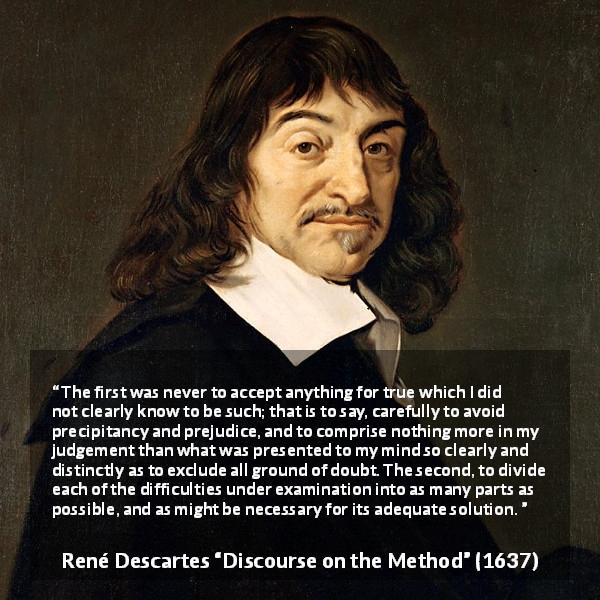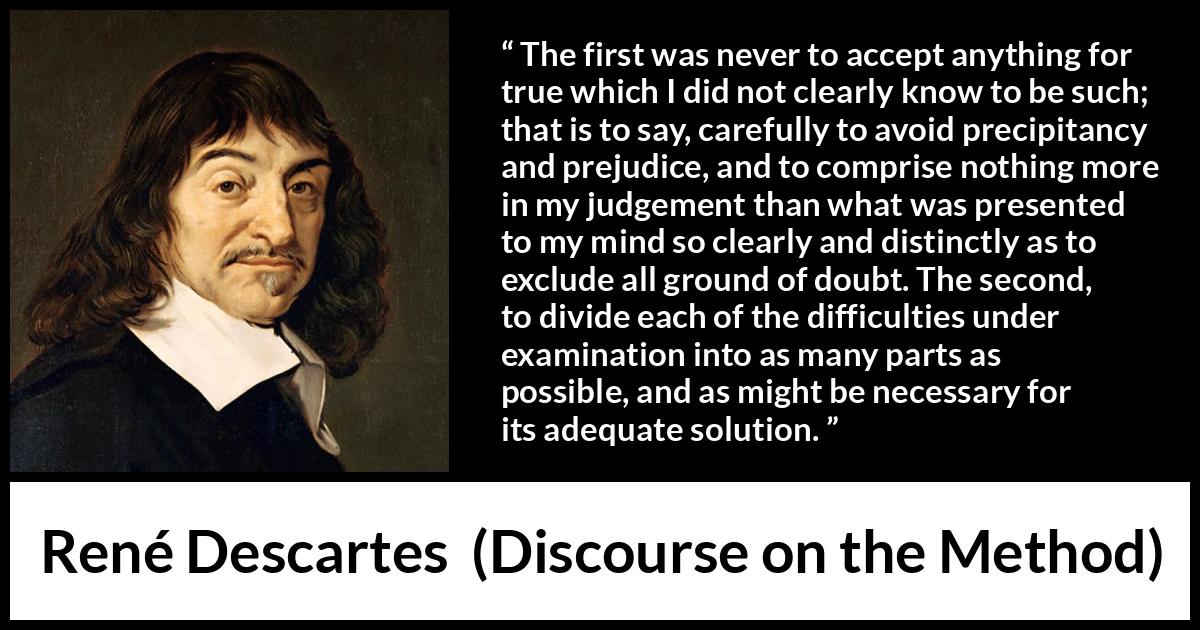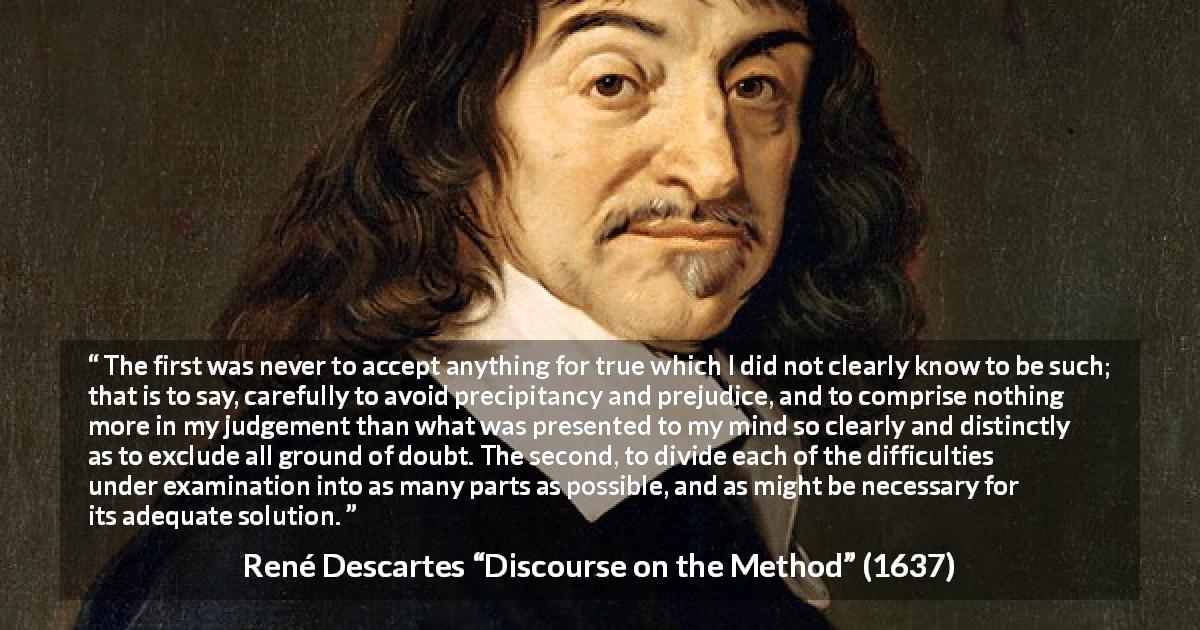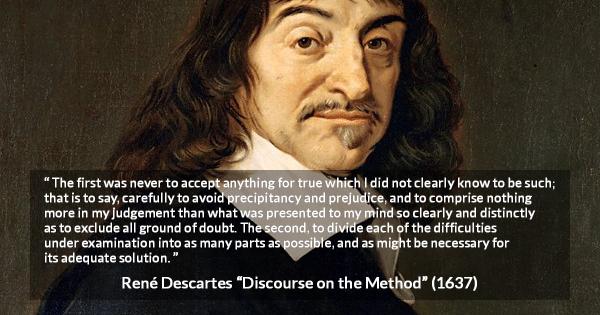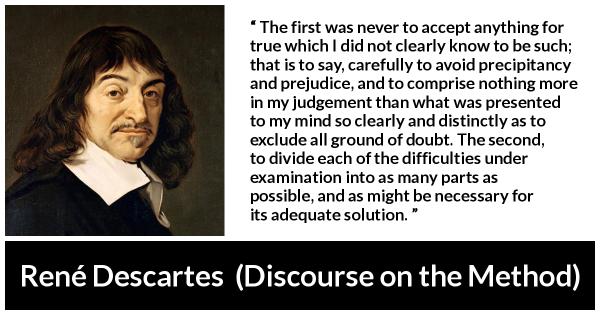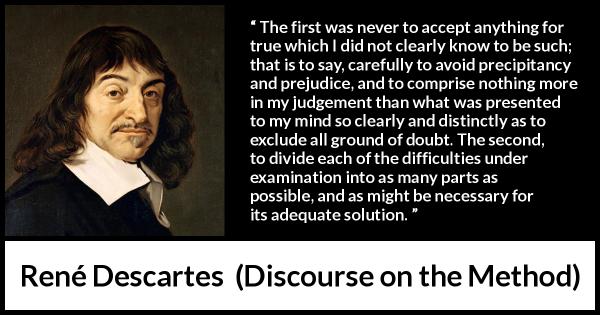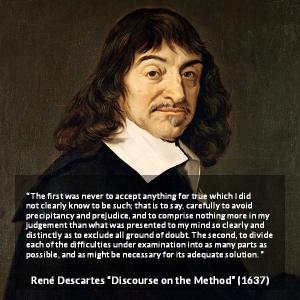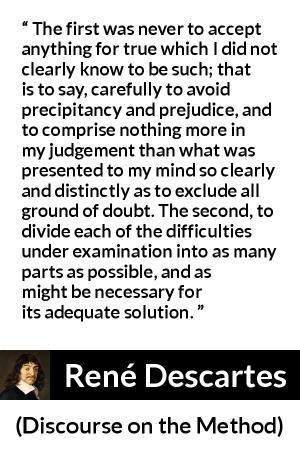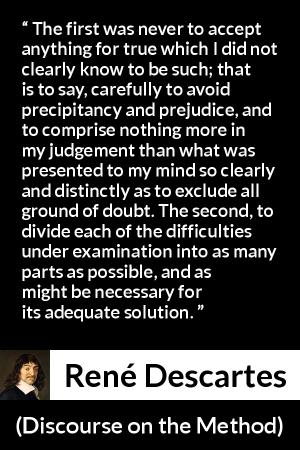“ The first was never to accept anything for true which I did not clearly know to be such; that is to say, carefully to avoid precipitancy and prejudice, and to comprise nothing more in my judgement than what was presented to my mind so clearly and distinctly as to exclude all ground of doubt. The second, to divide each of the difficulties under examination into as many parts as possible, and as might be necessary for its adequate solution. ”
René Descartes, Discourse on the Method (1637). copy citation
| Author | René Descartes |
|---|---|
| Source | Discourse on the Method |
| Topic | doubt judgement difficulty solution |
| Date | 1637 |
| Language | English |
| Reference | |
| Note | |
| Weblink | http://www.gutenberg.org/files/59/59-h/59-h.htm |
Context
“And as a multitude of laws often only hampers justice, so that a state is best governed when, with few laws, these are rigidly administered; in like manner, instead of the great number of precepts of which logic is composed, I believed that the four following would prove perfectly sufficient for me, provided I took the firm and unwavering resolution never in a single instance to fail in observing them.
The first was never to accept anything for true which I did not clearly know to be such; that is to say, carefully to avoid precipitancy and prejudice, and to comprise nothing more in my judgement than what was presented to my mind so clearly and distinctly as to exclude all ground of doubt.
The second, to divide each of the difficulties under examination into as many parts as possible, and as might be necessary for its adequate solution.
The third, to conduct my thoughts in such order that, by commencing with objects the simplest and easiest to know, I might ascend by little and little, and, as it were, step by step, to the knowledge of the more complex; assigning in thought a certain order even to those objects which in their own nature do not stand in a relation of antecedence and sequence.” source
The first was never to accept anything for true which I did not clearly know to be such; that is to say, carefully to avoid precipitancy and prejudice, and to comprise nothing more in my judgement than what was presented to my mind so clearly and distinctly as to exclude all ground of doubt.
The second, to divide each of the difficulties under examination into as many parts as possible, and as might be necessary for its adequate solution.
The third, to conduct my thoughts in such order that, by commencing with objects the simplest and easiest to know, I might ascend by little and little, and, as it were, step by step, to the knowledge of the more complex; assigning in thought a certain order even to those objects which in their own nature do not stand in a relation of antecedence and sequence.” source






